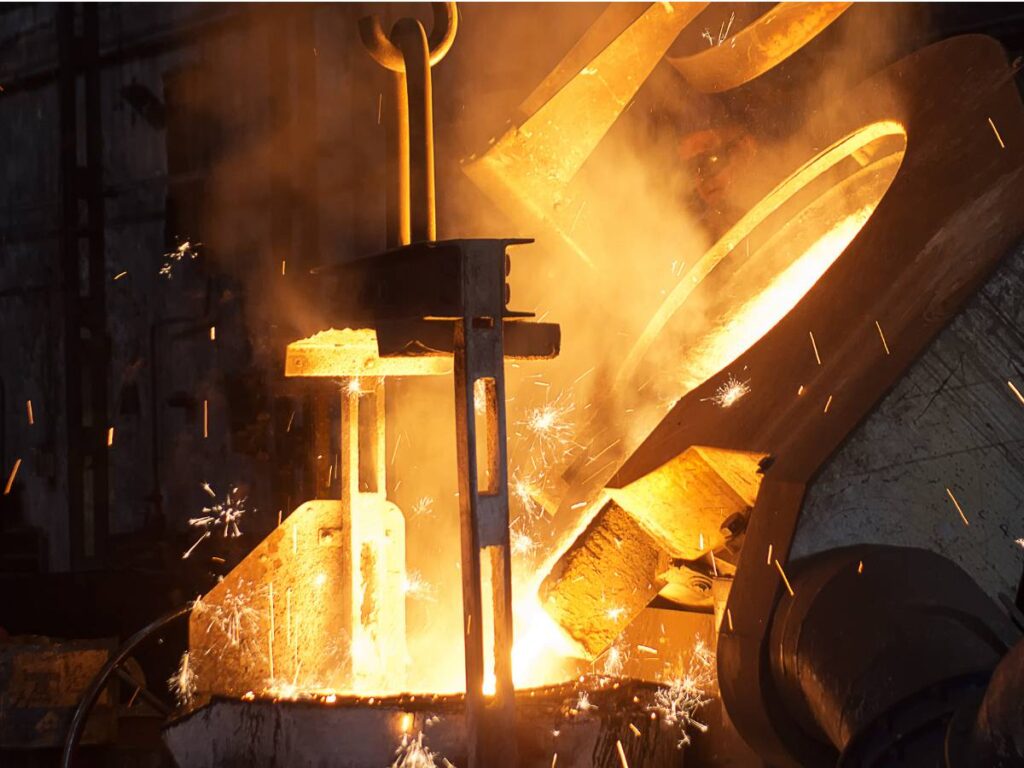Steel is a fundamental material that plays a significant role in modern society, providing the backbone for infrastructure, transportation, manufacturing, and countless consumer goods. It is a durable, versatile, and cost-effective material in everything from skyscrapers and bridges to automobiles and appliances. Without steel, our modern way of life would be impossible. Steel manufacturing is a complex process that involves numerous stages, from mining and refining iron ore to creating finished products. Each step requires precision, expertise, and state-of-the-art technology to produce high-quality steel products that meet the demands of a rapidly evolving global economy.
The Significance of Steel Manufacturing in Various Industries
Steel manufacturing is essential for many industries, including construction, transportation, energy, and packaging. It is used in producing cars, airplanes, ships, bridges, buildings, appliances, and many other products. Steel is favored for its durability, strength, and versatility. Without steel manufacturing, modern society would be unable to function as we know it.
The steel demand is expected to increase as populations and economies grow and new technologies emerge. As such, the steel manufacturing industry will continue to play a critical role in shaping the future of society and industry.
History of Steel Production
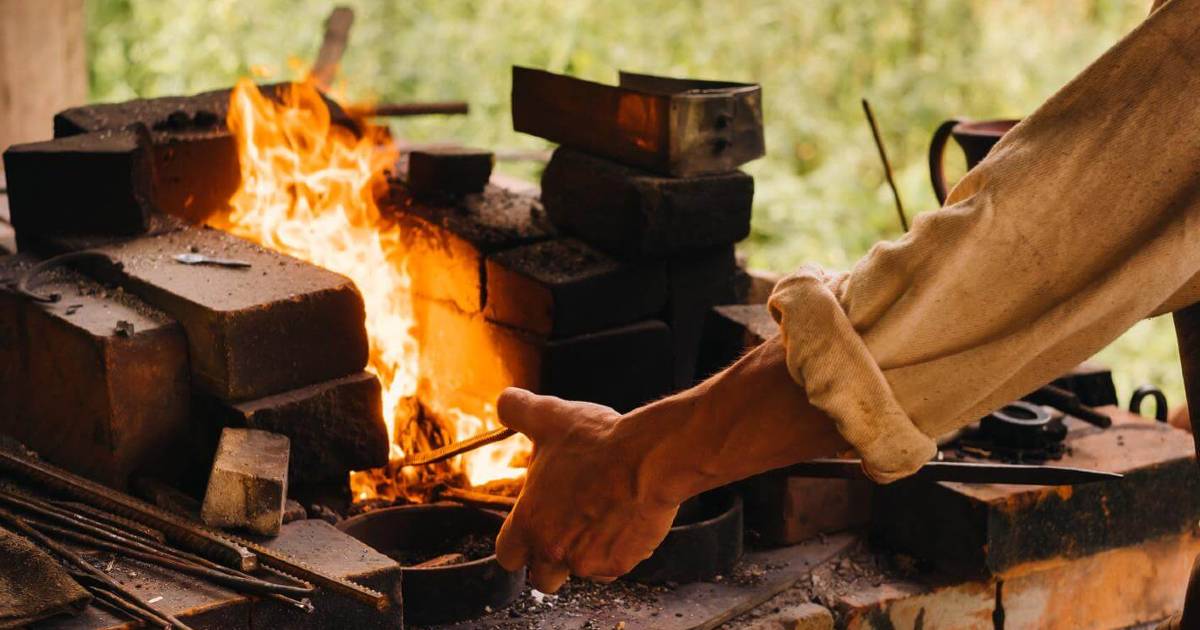
Early Methods of Steel Production
Early steel production methods were limited to the use of bloomeries and crucibles, which were inefficient and produced small quantities of steel. The invention of the Bessemer process in the mid-19th century revolutionized steel production, making it faster and cheaper.
However, the Bessemer process had limitations, such as producing brittle steel. This led to the development of the open-hearth process, which allowed for more precise control over the chemical composition of the steel.
The basic oxygen process and electric arc furnace are other modern methods of steel production that have further improved efficiency and quality.
The Impact of the Bessemer Process
The Bessemer process revolutionized steel production in the 19th century. This process used a converter to blast air through molten iron, removing impurities and reducing the carbon content.
This made it possible to mass-produce high-quality steel at a lower cost, which increased demand for steel in construction, transportation, and other industries. The Bessemer process also paved the way for other steelmaking technologies, such as open-hearth and electric arc furnaces.
This innovation in steel production changed the course of history and played a significant role in the Industrial Revolution.
Technological Advancements in Steel Manufacturing
Several technological advancements revolutionized steel manufacturing in the late 19th and early 20th centuries.
The introduction of the open-hearth furnace in the 1860s made steel production cheaper and more efficient. In contrast, the electric arc furnace, invented in the late 19th century, allowed for the production of specialty steels. In the 1950s, the basic oxygen process was introduced, which allowed for faster and more efficient steel production on a larger scale.
More recently, computer modeling and automation advancements have allowed for even greater precision and efficiency in the steelmaking process. These technological advancements have helped the steel industry keep pace with the demands of modern society.
Raw Materials and Preparation

Iron Ore: The Main Component in Steel Production
Iron ore is the primary ingredient in steel production. The deposits are found across the globe and extracted through mining. The extracted iron ore is then transported to processing plants, where it is crushed and turned into small pellets.
These pellets are then transported to steel mills for further processing. The quality of iron ore is crucial in determining the quality of the final steel product, as impurities such as sulfur and phosphorus can negatively impact the strength and durability of the steel.
Different methods are used to remove these impurities and improve the quality of the iron ore before it is used in steel production.
Coal and Limestone: Supporting Elements in the Process
Coal and limestone are supporting elements in the steel manufacturing process. It is used as a fuel and a reducing agent to remove oxygen from iron ore, while limestone is used as a flux to remove impurities and improve the quality of the final product.
Without these two elements, the steelmaking process would not be possible. The quality of the coal and limestone used can greatly impact the efficiency and quality of the steel produced.
The use of alternative materials, such as natural gas and recycled steel, has been explored to reduce the environmental impact of the steelmaking process.
Mining and Transportation of Raw Materials
Iron ore, coal, and limestone are mined from various locations worldwide and then transported to steel mills. Transportation can be done via trucks, trains, ships, or pipelines. Once the raw materials arrive at the mills, they are sorted, cleaned, and stored in large piles.
The materials are then carefully blended in predetermined ratios to achieve the desired chemical composition required for steel production.
Mining and transporting raw materials is critical to ensure the uninterrupted supply of materials and maintain the efficiency of the steel production process.
Preparation of Raw Materials for Steel Manufacturing
Once the raw materials are extracted, they must be processed before they can be used for steel production. The iron ore is crushed and sorted into different grades based on its purity level.
The coal is also crushed and graded to ensure it suits the blast furnace. The limestone is similarly crushed into small pieces. Once the raw materials have been prepared, they are transported to the blast furnace for smelting.
Preparing the raw materials is an essential step in the steel manufacturing process, ensuring that only the highest quality materials are used in steel production.
Steel Production Processes
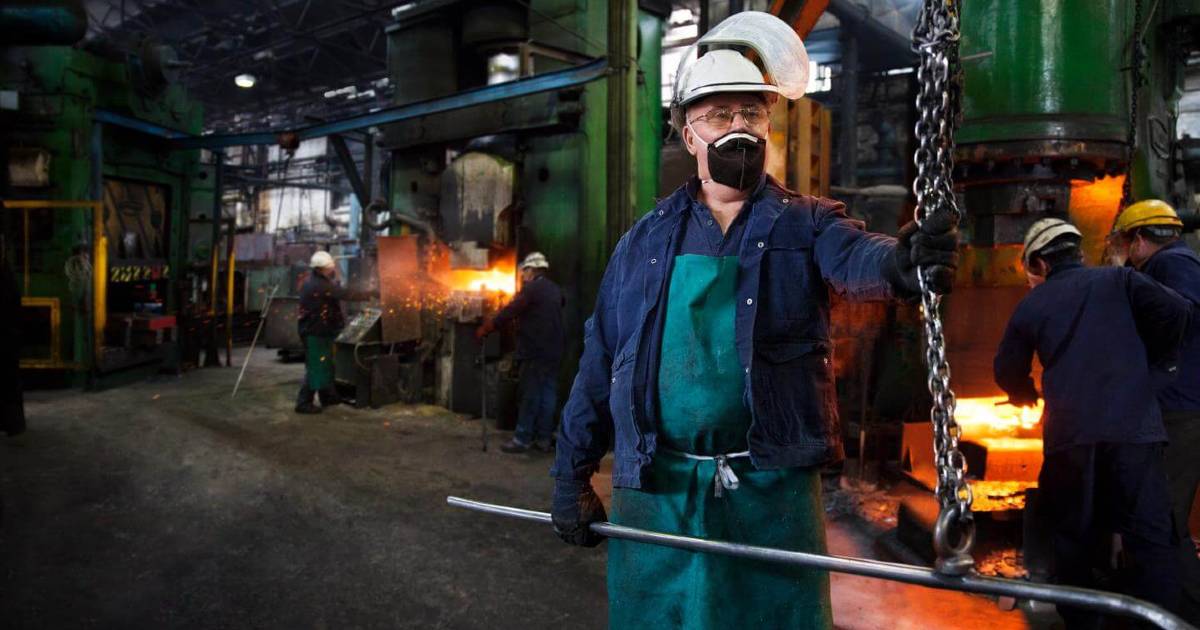
Blast Furnace Method
Ironmaking
Ironmaking is the first step in the blast furnace method of steel production. Coke, iron ore, and limestone are fed into the furnace at the top. The intense heat from the burning coke melts the iron ore and combines with limestone to create slag, which is then separated from the iron.
The molten iron is then drained from the bottom of the furnace and cast into molds, creating pig iron. This pig iron can be further refined into steel by removing impurities in the next stage of the process.
The blast furnace method has been the primary ironmaking method for centuries, but newer technologies have emerged.
Conversion of Pig Iron to Steel
After the pig iron is produced, it is further processed to obtain steel. One standard method is the basic oxygen steelmaking process. Pig iron and scrap steel are melted in a furnace, and oxygen is blown into the mixture to remove impurities.
Another method is the electric arc furnace process, which involves melting recycled steel in an electric arc furnace and adding various alloys and other materials to produce the desired steel grade.
These methods require precise control of temperature, pressure, and chemical composition to produce high-quality steel that meets the specific needs of various industries.
Electric Arc Furnace Method
Melting Scrap Metal
The electric arc furnace method involves melting scrap metal using an electric arc. The scrap metal is placed in a furnace, and an electric arc is passed through the metal to melt it. The process is faster and more energy-efficient than the blast furnace method, and it is used to produce specialty steels.
The steel quality produced by the electric arc furnace method can be controlled precisely, making it ideal for producing high-quality alloys. The process is also environmentally friendly because it uses recycled materials instead of raw materials.
The electric arc furnace method is famous for producing steel in the United States and other countries.
Refining and Alloying
Refining and alloying are the next steps in steel production after melting the scrap metal in an electric arc furnace. During refining, impurities such as sulfur and phosphorus are removed from the molten metal.
Alloying elements such as chromium, nickel, and manganese are added to achieve desired properties such as strength, corrosion resistance, and flexibility. Once the desired composition is completed, the molten steel is poured into molds to cool and solidify into various shapes and sizes for further processing and use in multiple industries.
The refining and alloying process ensures that the final steel product meets the required specifications and standards.
Direct Reduced Iron Method
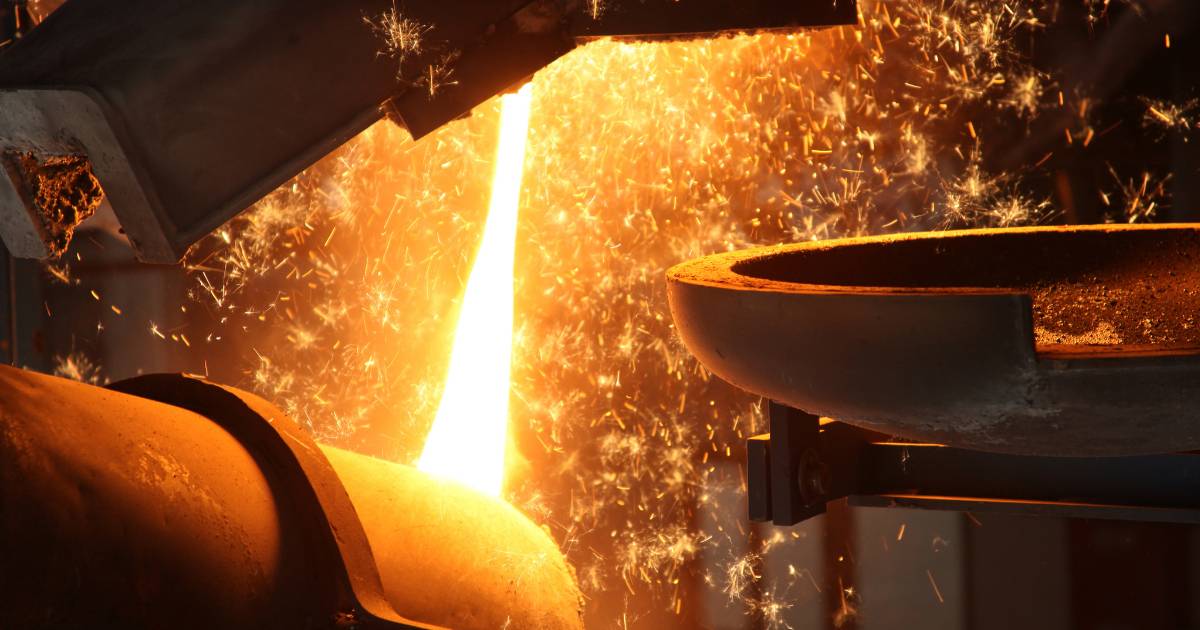
Reduction of Iron Ore
The direct reduced iron method starts with reducing iron ore pellets or lump ore using natural gas or coal. This process produces a sponge iron that is melted in an electric arc furnace or basic oxygen furnace to make steel.
The advantage of this method is that it can use a variety of iron ores, including those with high phosphorus or alkali content, which are difficult to use in other methods. This method is also more environmentally friendly than the blast furnace method since it produces less carbon dioxide emissions.
However, it is less commonly used than the blast furnace method due to its higher production costs.
Use of Direct Reduced Iron in Steel Production
Direct reduced iron (DRI) can produce high-quality steel in electric arc furnaces. The DRI is melted and mixed with scrap metal, providing the carbon content to form steel.
The use of DRI offers a more efficient and environmentally friendly alternative to traditional steel production methods as it eliminates the need for coking coal and reduces greenhouse gas emissions.
Additionally, the production of DRI requires less energy. It allows for greater flexibility in production, making it a preferred method in regions with limited access to coking coal or natural gas.
Comparison of Different Methods
Different steel production methods have various advantages and disadvantages. The blast furnace method is widely used for mass production, while the electric arc furnace method is efficient for small-scale production.
The direct reduced iron method has low emissions and produces high-quality steel, but it requires a significant amount of energy. The Bessemer process revolutionized the steel industry by reducing production time and cost, but it has limitations on the types of steel it can produce.
The primary oxygen furnace method is faster and more efficient than the Bessemer process and produces a wide range of steel grades but requires high initial capital investment.
Overall, the choice of production method depends on the desired steel properties, energy costs, and other factors.
Quality Control and Testing

Importance of Quality Control in Steel Manufacturing
Quality control is a very serious step of steel manufacturing to ensure that the product meets specific standards. Manufacturers can detect any issues and adjust the production process using various testing methods.
This helps to ensure that the final product is of consistent quality, free from defects, and meets the required specifications. Quality control is essential for the safety of the end-users of steel products and the manufacturer’s reputation.
Proper quality control measures can help to prevent costly mistakes, ensure customer satisfaction, and maintain a competitive edge in the industry.
Various Testing Methods
Mechanical Testing
Mechanical testing is essential in ensuring that steel products meet the required specifications. The automated testing process determines the steel’s strength, flexibility, and other mechanical properties.
Tensile testing, hardness testing, and impact testing are some of the standard mechanical tests performed. Tensile testing measures the force required to stretch the steel to its breaking point. Hardness testing determines the steel’s resistance to deformation, while impact testing determines the steel’s ability to absorb energy when subjected to sudden shock.
These tests are performed using specialized machines and techniques, and their results are used to evaluate the quality of the steel products.
Chemical Analysis
Chemical analysis is another critical testing method in steel manufacturing. Samples are taken from the steel during various stages of production and subjected to chemical analysis to determine the precise composition of the steel.
This ensures that the steel meets the necessary quality standards for its intended use. Chemical analysis can also detect any impurities or unwanted elements in the steel, allowing for adjustments to be made to the production process. Advanced techniques such as spectrometry are used to perform chemical analysis, providing highly accurate results.
The chemical composition of the steel is a crucial factor in determining its properties, making chemical analysis an essential aspect of quality control in steel manufacturing.
Non-Destructive Testing
Non-destructive testing is another quality control method in steel manufacturing. This technique involves examining the properties of steel without damaging the material.
Non-destructive testing includes a range of methods, such as visual inspection, magnetic particle inspection, ultrasonic testing, and radiographic testing. These methods can identify surface cracks, internal flaws, and other defects in steel products.
This testing is critical for ensuring the integrity of steel products, especially for applications where safety is paramount, such as in construction, aerospace, and transportation.
Using these methods, manufacturers can detect potential issues early on and take corrective action, resulting in higher-quality steel products and reducing the likelihood of future failures.
Ensuring Consistent Quality and Adherence to Standards
This involves setting up a quality control system, conducting regular inspections, and implementing corrective actions. Quality assurance personnel must be highly trained to perform their duties accurately.
Advanced technologies like artificial intelligence and machine learning are becoming increasingly popular in quality control. Adherence to industry and regulatory standards is also essential. Steel manufacturers must follow safety regulations and comply with environmental standards to ensure the safety of their workers and the environment.
By maintaining high quality and safety standards, steel manufacturers can build trust with customers and stakeholders, leading to long-term success.
Steel Products and Applications

Types of Steel Products
Flat Products
Flat products hold a prominent position among the most commonly used types of steel products. Producers manufacture them in large quantities by rolling heated slabs or billets between rollers, resulting in a uniform thickness and surface finish. Plates are thicker, flat pieces of steel used for structural purposes, such as building construction and shipbuilding. Coils are long, continuous rolls of steel used for further processing, such as cutting into sheets or forming into shapes.
Long Products
Long products refer to long steel products, such as bars, rods, and wires. These products are commonly used in construction, infrastructure, and manufacturing. The production process for long products involves heating steel billets in a furnace until they are malleable, then shaping them using rolling or extrusion techniques. This results in long, narrow shapes that can be cut to specific lengths. Long products are famous in construction because of their high strength and durability.
Tubular Products
Tubular products find application in a wide range of uses, including oil and gas pipelines, structural and mechanical applications, and even the manufacturing of bicycles. They are classified based on their manufacturing method, such as seamless or welded, and their shape, such as round, square, or rectangular. Manufacturers pierce a solid billet of steel when creating seamless tubes, while they form welded tubes by rolling a strip of steel into a tubular shape and welding the seam.
Applications Across Industries
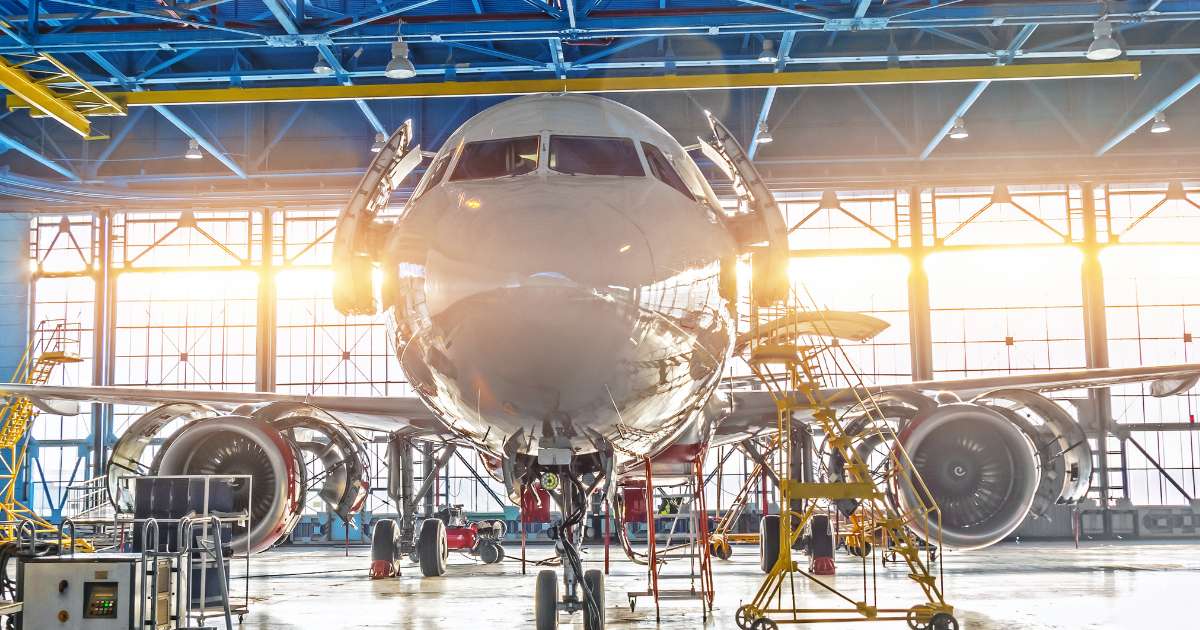
Construction
Construction is a significant industry that relies heavily on steel products. Steel’s strength, durability, and versatility make it a preferred choice for various construction applications.
Steel finds application in constructing high-rise buildings, bridges, stadiums, and various other structures. Products such as rebar, beams, and pipes are essential for construction projects.
Steel roofing and cladding are popular options for their weather resistance and aesthetic appeal. In construction, stakeholders prefer steel products for their cost-effectiveness and ease of installation. Overall, the construction industry continues to be a significant consumer of steel products, driving innovation and advancement in steel manufacturing.
Automotive
Automotive manufacturers widely use steel in their manufacturing processes due to its strength and durability. It produces many parts, including the chassis, engine, and transmission components.
High-strength steel makes safety features like seat belts, airbags, and crumple zones. Steel also reduces vehicle weight, improving fuel efficiency and performance. Researchers and manufacturers are developing new technologies, such as advanced high-strength steel and lightweight materials, specifically for utilization in electric vehicles.
The automotive industry actively adopts recycling steel scrap as an additional measure to minimize waste and reduce the environmental impact. The use of steel in the automotive industry is essential for producing durable, safe, and efficient vehicles.
Aerospace
The aerospace industry relies heavily on steel, particularly in constructing aircraft engines and structures. Industry professionals prefer steel alloys because they can withstand high temperatures, resist corrosion, and maintain strength under stress.
In addition, the high strength-to-weight ratio of steel makes it an ideal choice for parts that need to be both strong and lightweight. For example, landing gear, engine mounts, and structural components are often steel-made.
Quality control is essential in aerospace applications, as even the slightest defect or inconsistency can compromise the integrity of the entire structure. Therefore, rigorous testing and inspection procedures are in place to ensure the highest levels of safety and reliability.
Energy
The energy industry relies heavily on steel, particularly in oil and gas exploration, production, and transportation. Steel makes drilling equipment, pipelines, storage tanks, and offshore platforms. Steel is essential to wind turbines, solar panels, and transmission infrastructure in renewable energy.
Steel’s strength, durability, and resistance to corrosion make it ideal for use in harsh and corrosive environments. Steel’s recyclability and sustainability make it a popular choice for energy projects seeking to minimize their carbon footprint.
Consumer Goods
Various consumer goods, ranging from cutlery to appliances, incorporate steel. Stainless steel, a popular choice, finds application in kitchenware such as pots, pans, and utensils owing to its corrosion resistance and ease of cleaning.
Manufacturers utilize carbon steel to produce durable and strong knives, tools, and other consumer goods. Additionally, steel finds application in furniture construction, particularly outdoor furniture, owing to its ability to withstand various weather conditions.
Moreover, steel’s strength and electrical conductivity make it a preferred choice to incorporate into consumer electronics, such as computers and smartphones, during production.
Environmental and Sustainability Considerations
Environmental Impact of Steel Production
The production of steel has significant environmental impacts. CO2 emissions, water usage, and air pollution are all concerns.
Steel production generates waste and consumes vast natural resources, including iron ore and coal. The manufacturers are actively implementing various measures to minimize these environmental impacts. They implement various strategies, such as using recycled scrap metal in production, adopting cleaner energy sources, and optimizing production processes to enhance sustainability.
Various industry initiatives are in place to encourage sustainable practices, such as developing sustainable certifications and guidelines. With the growing importance of sustainability, steel manufacturers are increasingly adopting eco-friendly practices to reduce their environmental footprint.
Efforts to Reduce Emissions and Increase Energy Efficiency
Steel manufacturers have significantly tried reducing emissions and increasing energy efficiency in recent years. These efforts include implementing new technologies, such as carbon capture and storage, and using alternative fuels like natural gas and hydrogen.
Additionally, manufacturers have improved their production processes to reduce waste and increase materials recycling. They have also implemented energy-efficient equipment and practices to reduce energy consumption.
These efforts benefit the environment and result in cost savings for the manufacturers. Steel manufacturers actively develop and implement new strategies to minimize their environmental impact and promote sustainability in the industry.

Recycling and Reuse of Steel Products
Recycling and reusing steel products are vital strategies for reducing the environmental impact of steel production. As a highly recyclable material, Steel maintains its properties even after repeated recycling, making it an excellent choice for sustainable resource utilization.
This reduces the production process’s need for raw materials and energy consumption. Various recycling methods enable the repurposing of steel products, including melting to create new steel items, repurposing in construction projects, and transforming into new consumer goods.
Steel manufacturers are developing closed-loop systems that recover and reuse steel scrap generated during production. These efforts reduce the environmental impact and contribute to a more circular economy.
Promoting Sustainable Practices in the Steel Industry
Steel manufacturers are implementing sustainable practices by reducing emissions, optimizing production processes, and promoting circular economy principles.
Some of these initiatives include using renewable energy sources, implementing carbon capture technologies, and investing in research and development to improve energy efficiency. The industry is also promoting sustainable steel products and reducing waste by encouraging the reuse and recycling of steel. In addition, steel manufacturers are working with governments, NGOs, and other stakeholders to develop and implement sustainable practices across the supply chain.
These efforts ensure the industry’s long-term viability and minimize its environmental impact.
Future of Steel Manufacturing
Steel manufacturing involves extracting iron ore, refining it into pure iron, adding small amounts of carbon and other elements, and casting or rolling it into various shapes and forms.
Quality control and testing ensure the steel meets the necessary standards. Steel products come in different types, including flat, long, and tubular products.
The steel industry has made efforts to reduce emissions and increase energy efficiency, promote recycling and reuse of steel products, and promote sustainable practices.
Steel remains an essential material in modern society. Its strength, durability, and versatility make it a valuable resource for construction, automotive, aerospace, energy, and many other sectors.
While there are concerns about its environmental impact, the industry is actively working to reduce emissions, increase energy efficiency, and promote sustainable practices. The steel manufacturing process is complex and fascinating, involving numerous steps and technologies to transform raw materials into finished products.
The industry’s continuous growth and evolution crucially contribute to meeting the demands of a rapidly developing world. It is impossible to overstate the impact of steel on shaping modern society.
Trends in Steel Production
Future advancements and trends in steel production aim to reduce the environmental impact of steelmaking, enhance energy efficiency, and promote the increased utilization of renewable energy sources.
The industry is also exploring new processes to reduce emissions, such as direct reduction technology and carbon capture, utilization, and storage. In addition, there is a growing interest in using advanced materials and coatings to increase the performance and lifespan of steel products.
Other trends include using automation and digitalization to improve efficiency and quality control and the adoption of circular economy principles to promote the recycling and reuse of steel products.
Frequently Asked Questions
Further Readings
Our Locations
Get a Quote Now

